 It’s Tin For Win95
It’s Tin For Win95
Yes, that’s right, Wednesday marked 10 years of vaguely intelligent computing. 10 years ago, Windows 95 was released. It’s weird, because it’s 10 year old technology, but it really doesn’t seem that old: I still remember using it at school on old computers. Makes you wonder why Microsoft are still using a ten year old interface (OK, it’s shiny and got a plasticky look now, but you know what I mean).
The Washington Post has an interesting read on the subject here, basically an announcement they wrote about it at the time. It’s funny to read how some things about marketing campaigns for high-profile software releases have changed nowadays, and what parts have stayed exactly the same. One thing everyone will likely recognise is the hype!
As granddad would say: “It was better in the old days!”
 Browse the Web on PSP
Browse the Web on PSP
Despite only officially being available in Europe from the 1st of September, the software updates for it have finally reached v.2.0. This latest update includes a host of exciting new features, including a Web browser and the ability to play AAC music tracks. These added features for a handheld gaming system that is already looking very promising, serve to make the gadget a must-have for every technology-conscious teen under the sun. Being able to browse the Web on the device, which incidentally has Wi-Fi technology, might even make it a laptop replacement of sorts. Beware though: The device has no keyboard, so typing long emails on it might become a little tiresome, as it uses a virtual on-screen keyboard for text input.
I have briefly played around with a PSP, as a friend of mine was in Japan and brought one back with him. The graphics look awesome, despite the text being Japanese, and I can’t wait to get my hands on one!
Laptop Battery Low Warning
 The Register is running a story on how Panasonic and Intel are working together to make a 12-hour laptop battery. Can’t wait for this technology to filter down to phones and other small consumer electronics, as battery technology is the one thing the vast majority of gadgets still seem way behind on. It’s all fine and dandy having a million and one functions in one device, but if the battery only lasts two hours, then to me, it’s no use.
The Register is running a story on how Panasonic and Intel are working together to make a 12-hour laptop battery. Can’t wait for this technology to filter down to phones and other small consumer electronics, as battery technology is the one thing the vast majority of gadgets still seem way behind on. It’s all fine and dandy having a million and one functions in one device, but if the battery only lasts two hours, then to me, it’s no use.
Apparently, the technology works by adding a small amount of Nickel to the standard ingredients of a battery pack.
Remains to be seen how long this will take to mature, but in the meantime, I can always hope for cold fusion to arrive!
 Upgrades To Flight Mode
Upgrades To Flight Mode
With all the new gismos appearing on phones nowadays, it seems a shame to be unable to use them on a plane, ofcourse with all the wireless features switched off. This is why phone companies started introducing a concept called flight mode.
The theory behind this simple setting on a handset is to allow users to utilize all the features on their phones, when they’re not allowed to have anything that transmits radio signals. What, then, is the use of this if you’re not allowed to use it? I recently came back from holiday, was sitting there in the plane, minding my own business, trying to reply to some mail on my Blackberry, when a member of the flight-crew and asked me to switch it off. I tried to explain that a) it was in flight mode, and so wasn’t going to harm anyone, and b) that I had some work to do, so could he please leave me alone.
The flight attendant then stated that it was company policy to make people turn their phones totally off at all times, adding that I could use my laptop instead if I so wished. Now bear in mind the stupidity of this statement: My laptop has GPRS, 3G, Bluetooth and Wi-Fi connections, and would likely broadcast the hell out of anywhere, and the flight attendant would rather I use it than my phone which is innocently sitting in there flight mode, not bothering anyone. Trying to explain this resulted in a rapid degrading of his ability to speak English and ended with him just pointing to my laptop and sticking his thumbs in the air. The airline, which shall remain nameless for now as I don’t want to stir up any trouble, will not be receiving my custom again. When will airlines realise that they have to be nice to people and move with the times a bit more to receive their custom? In these days of cut price travel, it’s all about value-added services, and this certainly is one of them.
I was interested then because of this, about what I read regarding the Consumer Electronics association trying to make it possible to easily determine whether a phone is in flight mode or not. Can’t wait to see some results, but I fear it may then still be a case of training flight crew to know what it means.
 GetMeThere.co.uk has launched what they are claiming is the first, free to install, Pay-as-you-go Mobile Satellite Navigation solution in the UK.
GetMeThere.co.uk has launched what they are claiming is the first, free to install, Pay-as-you-go Mobile Satellite Navigation solution in the UK. The system offers a comprehensive suite of features, including full turn by turn navigation, voice commands, traffic avoidance, auto-zooming maps as a junction approaches, hands free use, European road network coverage with full address, house number, street and postcode search.
The system offers a comprehensive suite of features, including full turn by turn navigation, voice commands, traffic avoidance, auto-zooming maps as a junction approaches, hands free use, European road network coverage with full address, house number, street and postcode search.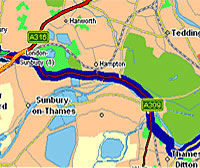 Jon West, Director of GetMeThere.co.uk said “With over 4.5m navigationsystems expected to be sold this year across Europe, TARA Mobile SatNav has arrived just in time to provide a low cost, quality solution for the intelligent motorist. With GPS devices now available at around the £50 ($90, €74) mark, SatNav has become a must have for all motorists”.
Jon West, Director of GetMeThere.co.uk said “With over 4.5m navigationsystems expected to be sold this year across Europe, TARA Mobile SatNav has arrived just in time to provide a low cost, quality solution for the intelligent motorist. With GPS devices now available at around the £50 ($90, €74) mark, SatNav has become a must have for all motorists”.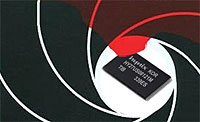 Hard drives are soon to go the way of 8 track cartridges and steam powered radios according to Samsung’s semi-conductor CEO Dr. Chang Gyu Hwang.
Hard drives are soon to go the way of 8 track cartridges and steam powered radios according to Samsung’s semi-conductor CEO Dr. Chang Gyu Hwang. With a cackle in his voice and a size nine sending a RAID array skywards, Hwang reckons that we’ll soon be seeing laptop memory cards with 32GB of memory, based on multiple 16Gb flash chips.
With a cackle in his voice and a size nine sending a RAID array skywards, Hwang reckons that we’ll soon be seeing laptop memory cards with 32GB of memory, based on multiple 16Gb flash chips.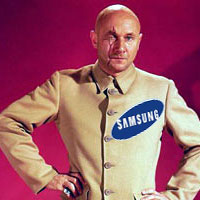 A big advantage of using flash memory in notebooks is that the technology is resistant to the sort of mechanical shocks that can often knacker a hard drive.
A big advantage of using flash memory in notebooks is that the technology is resistant to the sort of mechanical shocks that can often knacker a hard drive. O2 has announced the launch of the o2 Xda Exec, the first PDA and mobile phone combo device to feature 3G.
O2 has announced the launch of the o2 Xda Exec, the first PDA and mobile phone combo device to feature 3G. Reflecting its business focus, the phone comes with Pocket Outlook, Word, Excel, Powerpoint and PDF viewers pre-installed and offers Bluetooth, Wireless LAN, 3G and tri-band GPRS connectivity.
Reflecting its business focus, the phone comes with Pocket Outlook, Word, Excel, Powerpoint and PDF viewers pre-installed and offers Bluetooth, Wireless LAN, 3G and tri-band GPRS connectivity. Combined with our service bundle, we believe that the O2 Xda Exec will build on the success of the Xda range, extending our market share still further into 2006.”
Combined with our service bundle, we believe that the O2 Xda Exec will build on the success of the Xda range, extending our market share still further into 2006.” Technical stuff:
Technical stuff: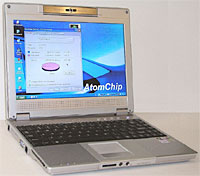 UPDATE – Thanks for the number of people who have written to us about this one, lead by Matt Lacey.
UPDATE – Thanks for the number of people who have written to us about this one, lead by Matt Lacey. The 6.8GHz behemoth is powered by AtomChip’s Quantum II processor (or four 1.7GHz Intel Pentium M processors) with a terabyte of Quantum-Optical non-volatile RAM (NvIOpSRAM-SODIMM 200-pin) onboard.
The 6.8GHz behemoth is powered by AtomChip’s Quantum II processor (or four 1.7GHz Intel Pentium M processors) with a terabyte of Quantum-Optical non-volatile RAM (NvIOpSRAM-SODIMM 200-pin) onboard.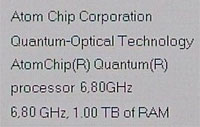 Despite the nation-threatening amount of power on hand, Atom Chip are claiming an impressive battery life of approximately 8 hours for the AtomChip II processor and 3 hours for the 4 x Intel Pentium M processor version.
Despite the nation-threatening amount of power on hand, Atom Chip are claiming an impressive battery life of approximately 8 hours for the AtomChip II processor and 3 hours for the 4 x Intel Pentium M processor version. Send Your Name To Pluto
Send Your Name To Pluto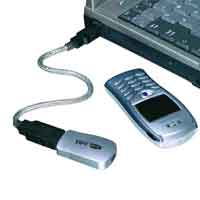 It’s fast, but why? Nice solution, but where’s the problem?
It’s fast, but why? Nice solution, but where’s the problem? That’s… Fast!
That’s… Fast!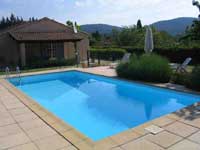 Big Brother is Everywhere
Big Brother is Everywhere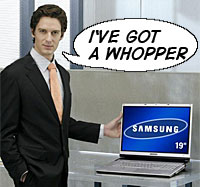 Samsung will be debuting the world’s first 19″ notebook, the Samsung M70, on 2 September at the IFA Consumer Electronics Show in Berlin.
Samsung will be debuting the world’s first 19″ notebook, the Samsung M70, on 2 September at the IFA Consumer Electronics Show in Berlin.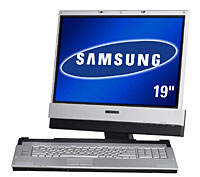 This lets users detach the laptop’s screen and place it in a dock to give the appearance of a conventional desktop.
This lets users detach the laptop’s screen and place it in a dock to give the appearance of a conventional desktop.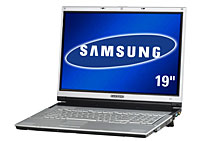 Despite the added complexity and enormous screen size, Samsung have claimed that the laptop will weigh no more than their current 17-inch notebook so it should be vaguely portable (if you work out at the gym).
Despite the added complexity and enormous screen size, Samsung have claimed that the laptop will weigh no more than their current 17-inch notebook so it should be vaguely portable (if you work out at the gym).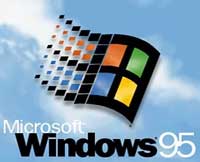 It’s Tin For Win95
It’s Tin For Win95 Browse the Web on PSP
Browse the Web on PSP Upgrades To Flight Mode
Upgrades To Flight Mode Sony and Toshiba have failed to agree on a unified format for next-generation DVDs, according to a Japanese newspaper report today.
Sony and Toshiba have failed to agree on a unified format for next-generation DVDs, according to a Japanese newspaper report today. Japan’s Yomiuri newspaper has reported that the two companies have now abandoned their efforts to develop a unified format, with negotiations falling through after both sides refused to budge.
Japan’s Yomiuri newspaper has reported that the two companies have now abandoned their efforts to develop a unified format, with negotiations falling through after both sides refused to budge.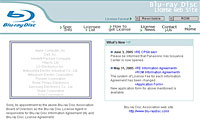 The newspaper report hasn’t been verified by either firm, although both have said that they have not ruled out the possibility of further talks at some point.
The newspaper report hasn’t been verified by either firm, although both have said that they have not ruled out the possibility of further talks at some point.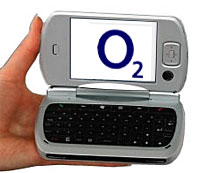 O2 is set to introduce the new Windows Xda Exec, touted as the most feature-packed smartphone ever released.
O2 is set to introduce the new Windows Xda Exec, touted as the most feature-packed smartphone ever released.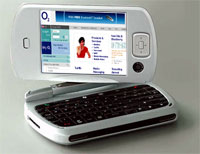 Powering the smartphone is an Intel PXA270 520MHz processor supported by 128MB ROM and 64MB RAM onboard, with expansion taken care of via a MMC/SD Card slot (supporting SDIO).
Powering the smartphone is an Intel PXA270 520MHz processor supported by 128MB ROM and 64MB RAM onboard, with expansion taken care of via a MMC/SD Card slot (supporting SDIO).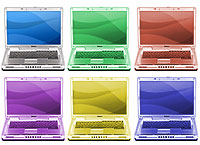 The doomsayers were predicting a slow year for PC shipments, but a continuing shift to notebooks and falling PC prices have made it a bumper second quarter for the worldwide PC market, according to research companies IDC and Gartner.
The doomsayers were predicting a slow year for PC shipments, but a continuing shift to notebooks and falling PC prices have made it a bumper second quarter for the worldwide PC market, according to research companies IDC and Gartner. The company enjoyed big sales outside the US and remains the market share leader in many countries throughout Europe.
The company enjoyed big sales outside the US and remains the market share leader in many countries throughout Europe.